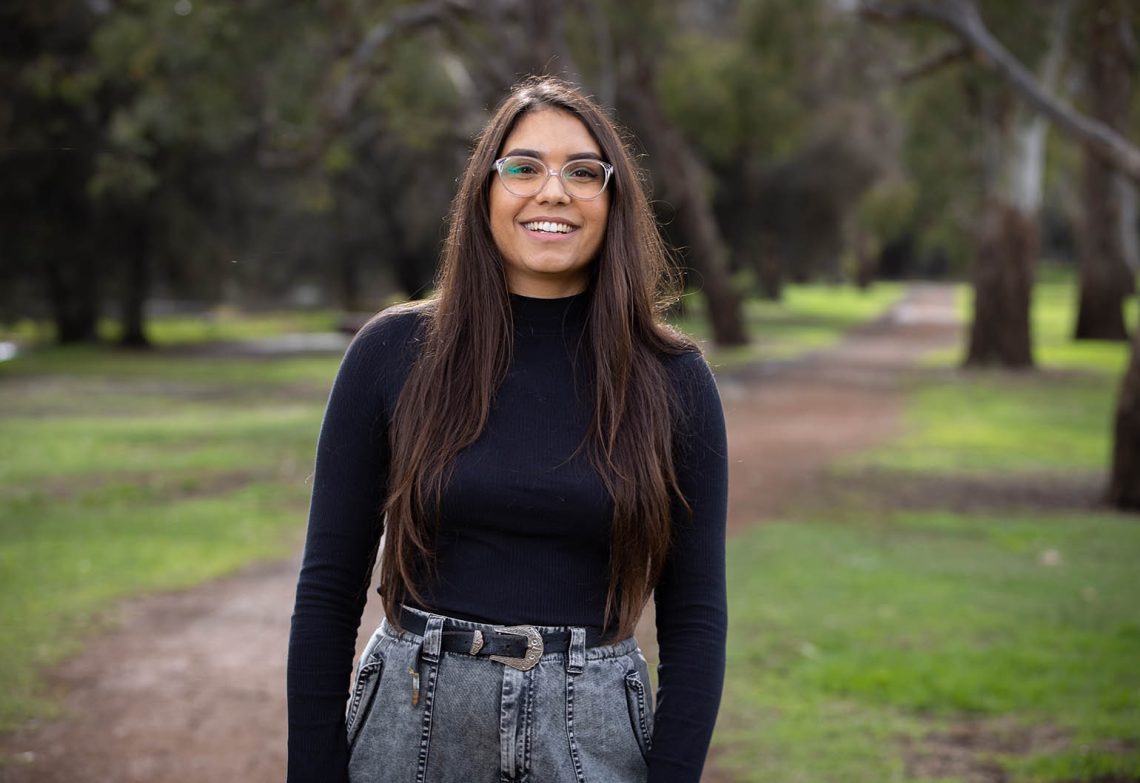Curtin University Civil Engineering student and Engineers Australia member Tahlia Prior StudIEAust was recently named Shell Aboriginal STEM Student of the Year at the Western Australia Premier’s Science Awards.
Prior is a proud Ballardong Whadjuk Nyungar, Wajarri Yamatji woman, and her focus throughout her studies has been Elder and Traditional Owner community representation, and in connecting with industry partners and opportunities.
Introduced to engineering at school
Prior has a personality quiz at school to thank for introducing the idea of engineering.
“The top recommendation was engineering, and architecture was second. At that point I didn’t really know what engineering was – until then I thought it was just working on cars,” she says.
Another round of thanks goes to Prior’s mother, who quickly sent her to the Indigenous Australians Engineering School (IAES) – a program run through Sydney University. That was in 2012.
“While I was at that camp I learned that engineers really do the problem solving of design,” continues Prior. “I’ve always loved problem solving, so that’s when I really started to pursue engineering.”
Continuing her engineering education
Returning from IAES, Prior’s main focus was on her studies.
“I struggled with the maths at first,” explains Prior.
A series of moves across the country was disruptive for her later school years, but despite this she received a scholarship at St Peter’s Lutheran College in Queensland.
“I was able to complete my final two years of school there with really good grades,” says Prior.
After a year at the University of Queensland, Prior moved to Perth, WA, and began her current course of study at Curtin University.
“It feels like a long journey,” she says, “and now I’m in my final semester working on my thesis.”
Research focus
“My thesis is focused on protection and management of Indigenous cultural and intellectual property,” explains Prior.
“My research agenda is framed by the priorities and interests of my Ballardong Whadjuk Nyungar Elders and community,” she continues.
“The research contributes to the movement for emancipation and repatriation of Indigenous Knowledges when Indigenous and western cultures meet on stewardship initiatives.
“People often talk about incorporating or integrating Aboriginal Knowledges. But that often means extracting whatever someone finds valuable based on their own justifications, standards and biases.
“But Aboriginal Knowledge has its own knowledge paradigm, its own way of doing. So my research is about bringing two knowledge paradigms together in a respectful way that maintains the integrity of the Indigenous culture.
“Once you start extracting knowledge from its paradigm, you can lose the integrity of that knowledge.”
Prior is dedicated to ensuring that policies and legislation is inclusive of Indigenous worldview, and rights.
“It all leads to building respectful and collegial relationships with Traditional Owners,” she says.
Driving policy change
“Engineers can inspire and drive policy change,” she continues, “and there is a lot of policy that falls short in elevating Aboriginal peoples.”
Engineers need to be educated on Indigenous people’s rights, says Prior.
By bridging the gap through processes and policies, engineers can build the respectful relationships that the industry needs, she adds.
“The Indigenous worldview is highly interrelated – everything is connected. We need to be the initiators of change that contributes to outcomes that are more regenerative and sustainable for the environment.
“Each small step brings us closer to working with Traditional Owners more closely, and that will just lead to better outcomes for everyone.”
For more of the latest engineering news sign up to create’s weekly newsletter.



